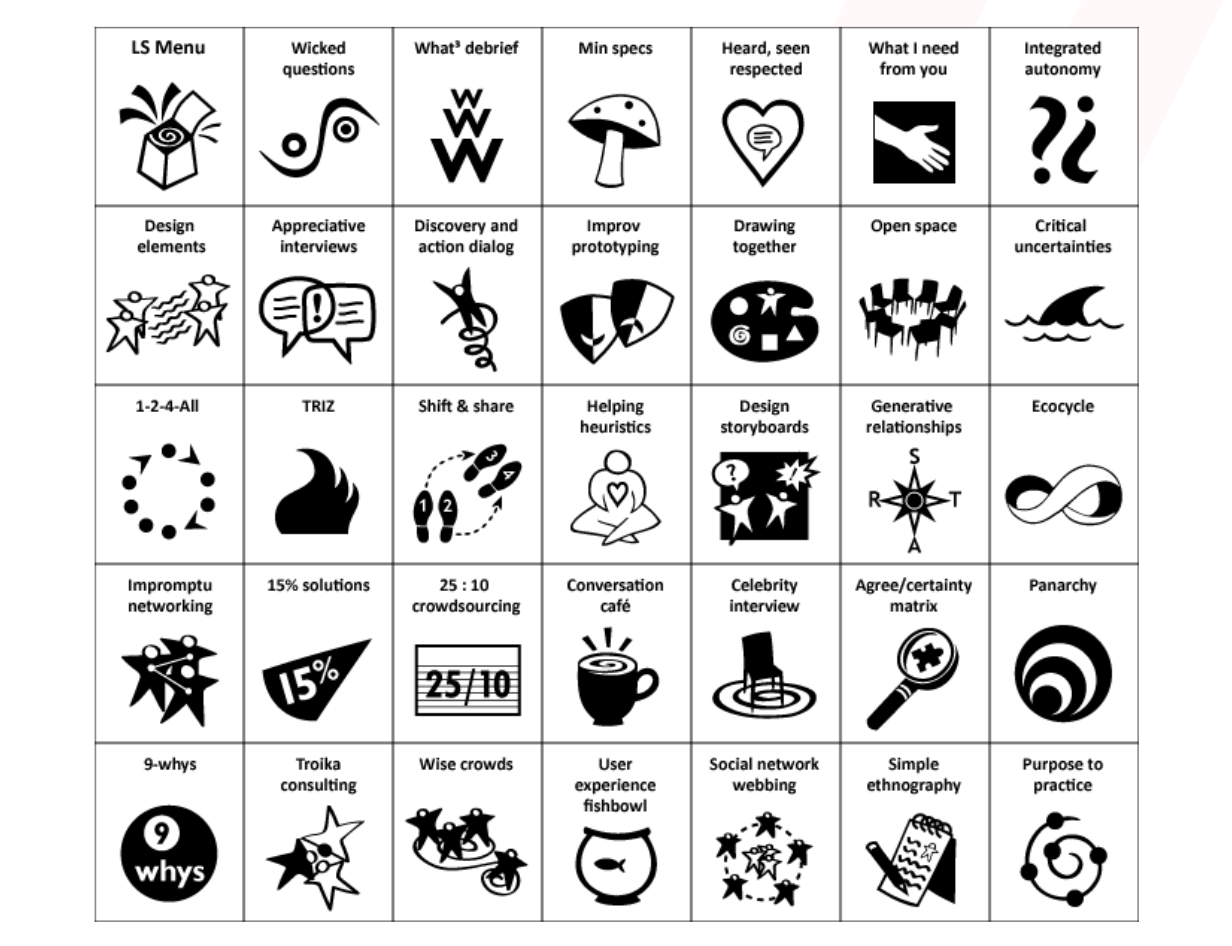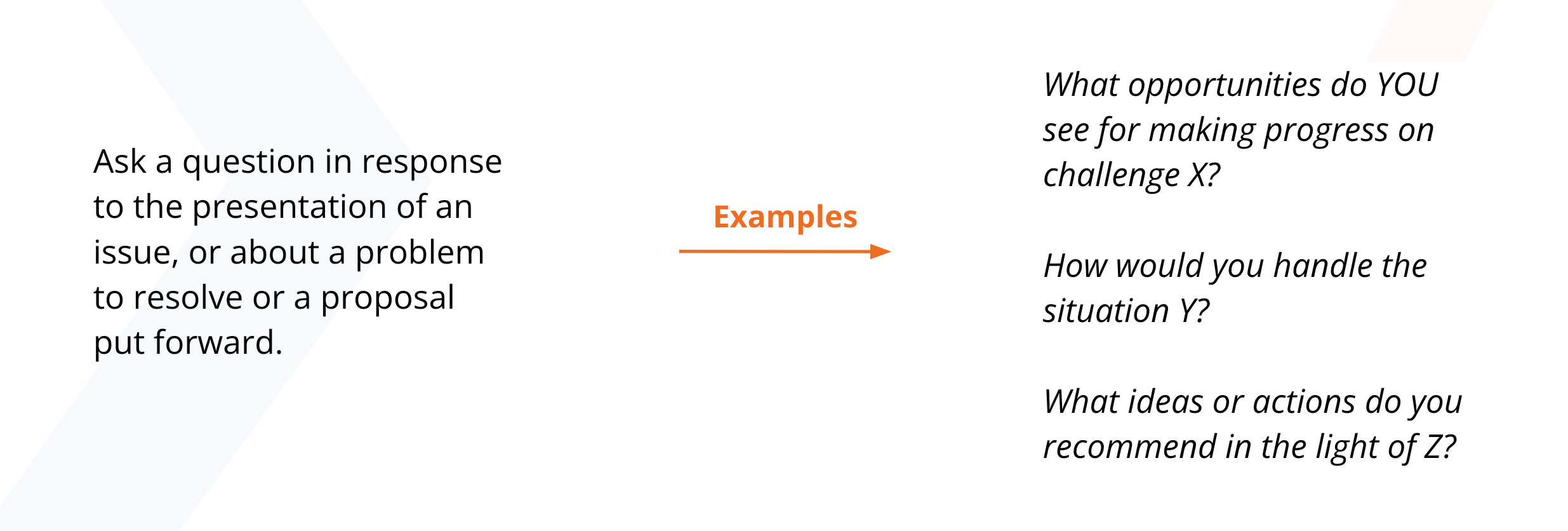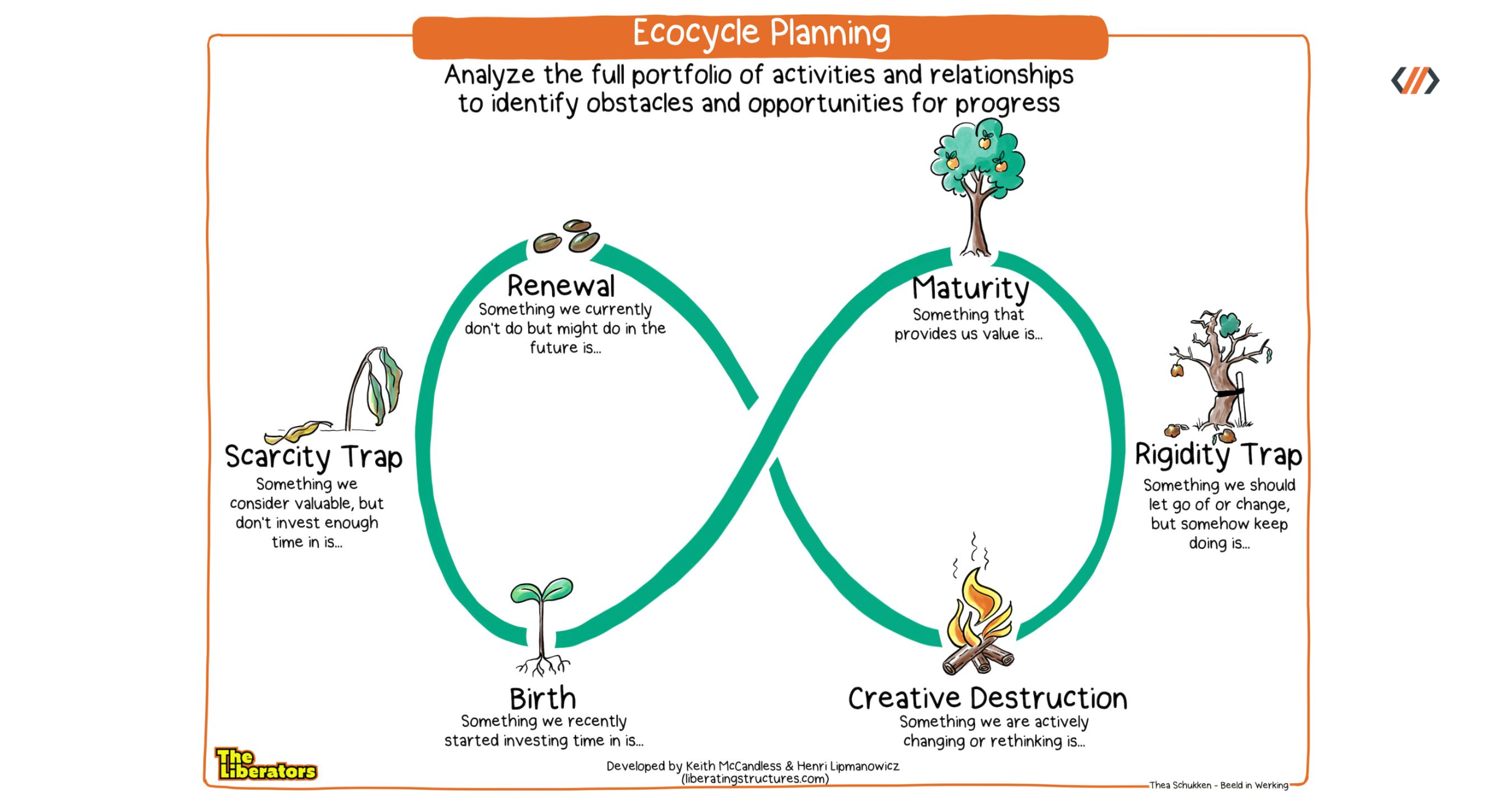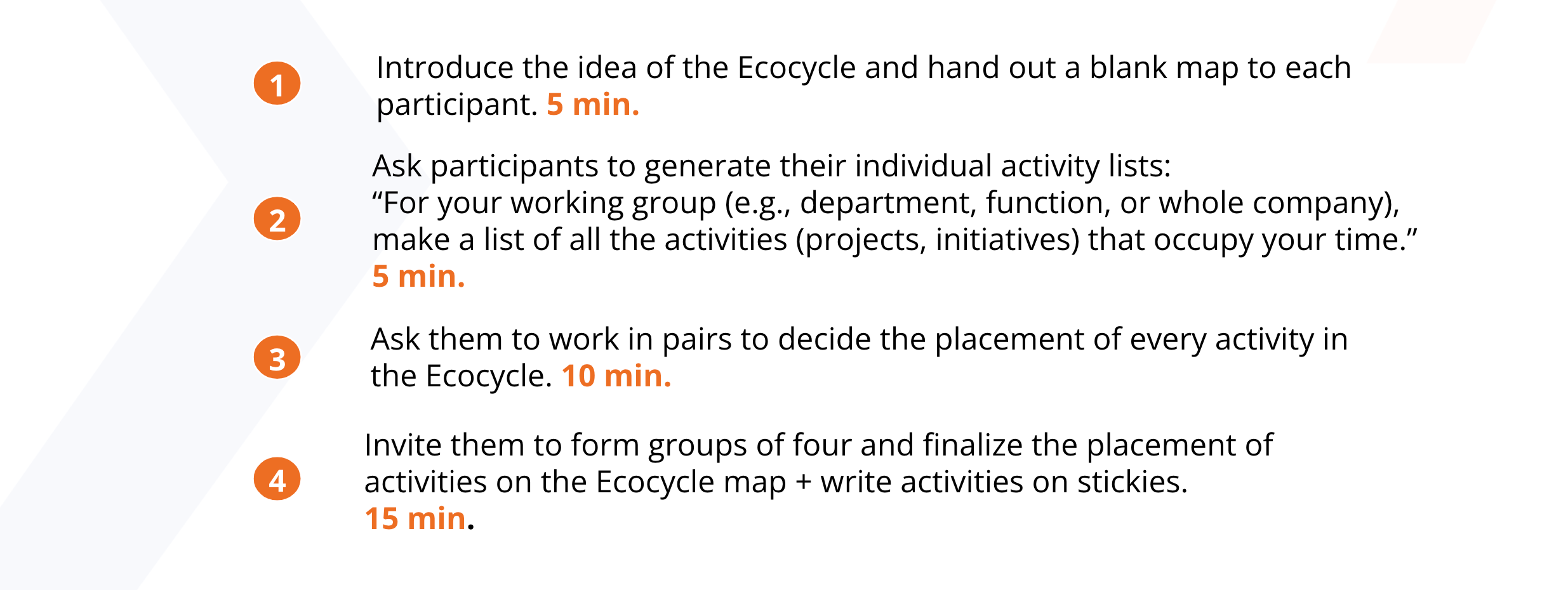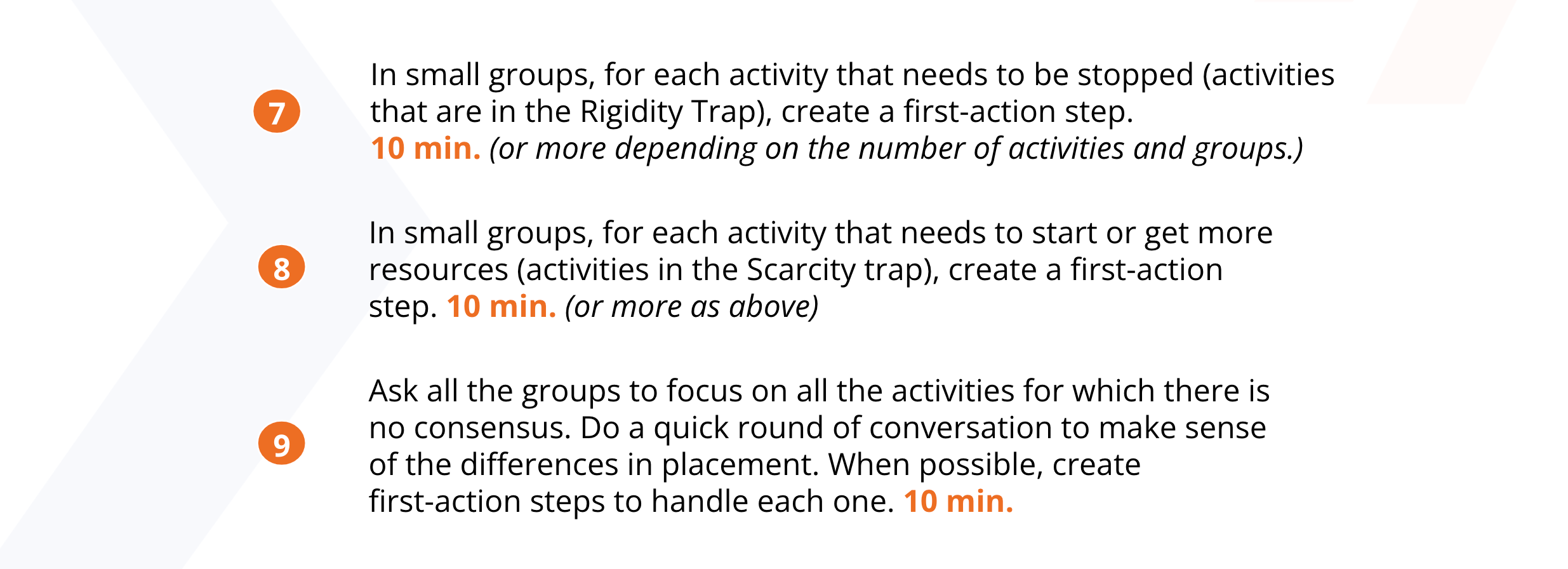Have you ever heard of liberating structures? If not, I’d like to introduce you to Ecocycle Planning and 1-2-4-All, two great tools for facilitating meetings that engage and activate all your group members. And if you have, I invite you to skim through this article and ensure your knowledge is up to date - to constantly improve your skills.
Before we get to the main topic, I'd like to briefly explain the idea of liberating structures (LS). Then I'll show you the 1-2-4-All exercise, the easiest and simplest LS exercise, which is also used to facilitate part of Ecocycle Planning.
Table of Contents:
- Liberating Structures
- 1-2-4-All
- Ecocycle Planning: purpose, structure, and a few use cases
- My thoughts on Liberating Structures and Ecocycle Planning
Liberating Structures: bring back the ability to generate ideas for your group members
So, what are liberating structures? And what problem are they aiming to solve?
Let me start with a short context story. Two gentlemen, Henri Lipmanowicz and Keith McCandless, once came up with the following reflection:
“Our world is increasingly complex, interdependent, and culturally diverse. The most pressing challenges we face cut across geographic, cultural, and technical boundaries.”
This is something we all deal with every day at work, especially if we work with diverse participants of different cultures, beliefs, and social norms in large, international companies. They then concluded that:
“Working together productively with differences is central to making progress.”
Let’s have a closer look at the semantics here. As you can see, they said “with differences,” not “against those differences.” This construction suggests that diverse backgrounds and experiences are considered strengths, not obstacles.
Tackling the universal challenge might seem a tad too philosophical, as the problem description does not provide a tangible enough challenge to solve. And we all know that describing a problem correctly is half the battle to solve it in the world of management.
To give you more actionable advice, McCandless and Lipmanowicz came up with the following problem statement:
“Unwittingly, the conventional structures used to organize how people routinely work together stifle inclusion and engagement while neglecting the diverse talents needed to make progress together.”
In other words, they observed that how people interact in companies daily is not productive and doesn't let team members use all of their strengths. Moreover - most common interaction models used in professional work environments stifle the potential of the collective mind of the group. The solution they came up with is liberating structures.
“Liberating structures (LS) are novel and practical how-to methods to help you include and unleash everyone in shaping next steps.”
To make this possible, they have put together a set of 33 easy-to-use exercises that can help anyone have more productive meetings and conversations, make progress faster, and create a very inclusive and safe workplace space. As their explanation follows:
“With LS, it is simple and easy to learn tiny shifts in the way we meet, plan, decide and relate to one another.”
Examples of which you’ll see later on.
What’s also interesting about the LS is that “no lengthy training courses on special skills are required; mastery is simply a matter of practice.” Hence, most of those structures can be learned in 30 minutes to one hour and used on the go.
And there's no denying how helpful they are. Exercises gathered under the liberating structures umbrella help us work better together and build trust. If you use them correctly, everyone on your team (or any other type of interaction you’re found in) can participate in a productive conversation. This way, you’ll be able to pick everyone’s mind and help the group reach its full potential. Just think of all the time saved, frustrations avoided, and satisfaction provided.
Going back to our two original authors, McCandless and Lipmanowicz, they concluded that we could observe five distinct aspects that occur each time we interact in our working environment (but not only). In exercises, those aspects are related to as design elements.
We can identify them by asking the following question:
- How do we make an invitation
- How do we distribute participation
- How do we configure groups
- How do we arrange the space in which we meet and discuss
- How do we sequence and allocate time
Moving on to the practice…
To give you more context, let’s use an example and try to define the kind of interaction we're having right now.
There was an invitation in the form of a link you’ve clicked to read my take on the topic in this article. Or maybe you’ve even used our meetup invitation to see me in person. Participation is clearly distributed, as there were three speakers at the event, and I'm the single author here. Our small groups are also configured, as we have a person who shares the insights (me) and those who - I hope - will learn from them (you).
Our space is digital because we meet through this article. However, there's still a layout, links, and a place to continue the discussion via comments. Our schedule is replaced by the article's structure, and the interaction time frame is estimated based on the reading time add-on.
I hope you now understand the basic structure of each interaction with our five design elements.
As the concept itself dates 30 years back, they were obviously created with face-to-face interaction in mind - but we can still adapt it to our digital reality. To give you even more context, presentations were one of those structures of interactions that the authors of liberating structures found stifling and not really productive. Sad to say, it hasn't changed much over time.
Now that we're done with the introduction let's talk about the structures themselves. To learn more about the subject, check the official website [see: sources].
Let’s move on to the most basic liberating structure called 1-2-4-All.
1-2-4-All: the surprising power of silent self-reflection
The 1-2-4-All exercise is designed to effectively tap into the collective wisdom of the group. Its goal is very simple but also very important. Whenever we have to brainstorm ideas, solutions to the problem, proposals, or suggestions, we can use it to gather inputs from the whole group relatively quickly and avoid having discussions dominated by any particular individual(s).
Let’s now go through the design elements for the 1-2-4-All exercise. Personally, I like to think of the first four elements as ingredients. They are a kind of meta-information about the structure of the exercise, giving us much-needed context. The fifth one, with the sequence of steps and time allocation, is more of a recipe - the thing we can actually cook from.
So, what's the first thing we'll need? Strucuring invitation. In 1-2-4-All, we must ask the group to focus on one problem at a time. In our case, I could ask you, the person reading my article, to think of ways to make it more interesting.
Next, we need to think about how the space should be arranged. In our case, we could again go back to how this website is designed to allow for comments - but as you probably would like to know how to apply it in day-to-day work with your team, let’s move to more practical examples.
Suppose we do our exercise in a chosen offline location. We could do it with unlimited groups, but we also need space for all participants to work alone, face-to-face, and in foursomes. For more comfort, we might need chairs, tables, and paper for participants to record their observations and insights.
To facilitate LS exercises online, you would need an online workspace like Miro, Jamboard, Mural, or something similar (preferably one that lets you use sticky notes). It would also be helpful to have some kind of conference software that lets people move to different breakout rooms. Both Zoom and Google Meet have this option, but you might need to upgrade to a higher plan to use it.
After that, we should distribute participation. This aspect might be a tad problematic, so let me advise you on how to tackle it. When we do this exercise, I usually think of it as a reminder of how we agreed to work on the topic together. You could compare it to a retrospective meeting, where it's best to start by saying, "We're here to have a respectful conversation." It’s our working agreement.
Similarly, you could remind the group that everyone should be included in the work and have an equal opportunity to contribute.
Now we can move to some basic group configuration rules. All you have to remember is that everyone works alone first, then in pairs, then in fours, and finally as a group.
As our four ingredients are ready - let’s put them together!
Moving on to the practice…
Let’s now talk about how to do this exercise.
As you can see, the first step is individual work. Bringing back our digital connection via this article, let’s rewind to my question of how to make this article more interesting. If I got a group around it, you'd have a minute to write down your ideas. “Bartek should use more memes in his work. He shouldn't use too many words. He should add some videos. He should start making video blogs. Or send each reader a gift package.” The more ideas, the better.
After a minute, our group should split into pairs (probably using online breakout rooms), compare ideas, discuss what makes each proposal good, and choose the best one. Then we do the same but in foursomes. At this stage, the group has to decide which ideas make the most sense (or bring the most value). Then we ask representatives of those groups to share only one idea that stood out during their conversation.
According to the proposed agenda, after just a few minutes - the exercise took around 12 minutes - we can employ the collective intelligence of a whole group to develop ideas. This will usually be rounded up to 20–25 minutes if we add extra breaks for group switching and more time for discussion. But still, I'm sure, we've all been in meetings where one person talked for 20 minutes straight, and nothing was accomplished, right?
And here, in around 20 mins, we’ve picked the brains of every single person in the room, and moreover, each idea was validated two times, first in a paired conversation, then by a small group of four(s). As a result, the quality of the ideas shared in the last phase should be promising.
This is a great exercise to generate ideas that can be used whenever you brainstorm or try to find a solution to a specific problem. No matter what group context we might find ourselves in.
And now, as we’ve learned the basic LS, let’s proceed to the cherry on the top of the cake: ecocycle planning.
Ecocycle Planning: purpose, structure, and a few use cases
Let’s start with a fact: while 1-2-4-All is a simple, universal structure that can be used in many different contexts, ecocycle planning is a bit more specific and complex liberating structure. It basically aims to analyze the list of activities done by a specific group that you work with and identify obstacles and opportunities to grow. I'm sure that just from this description, you can think of a few other exercises that might cover the same topics, but this one is worth getting to know.
Before we get into the details of the exercise, let's look at some ways ecocycle planning could be used. Not so long ago, one of my favorite agile influencers posted on LinkedIn some of the use cases for this structure, a summary of which you can see below. I also highly recommend reading full Barry’s post for more details.
Ecosystem planning use cases by Barry Overeem:
1.Team activities and events, 2. Relationships (of the team, your own), 3. Liberating structures (monitoring learning journey progress), 4. Change initiatives, 5. State of product, 6. Metrics, 7. Your personal role, 8. Product/project portfolio, 9. Meetings (of any specific group), 10. Coaching/Mentoring (perfect for initiating coaching work with individuals).
Let’s move forward to the template exercise.
As you can see, it might be hard to understand at first glance. We see six groups, each shown by an image and organized in a loop. We could assume that we could assign something to them if the printout were handed out to us, but it’s also a little overwhelming.
Let’s straighten the facts and address the categories one by one.
The four categories (and two traps) of Ecocycle Planning
Renewal [seeds]
Renewal represents all those things that would be valuable for our group (or company, or ourselves), but we’re not doing them. We only think about them. In my case, this could be going to the gym - obviously beneficial but forever delayed.
Birth [young plant]
Birth refers to things that already provide some value but aren't yet major optimized processes or activities. They still need resources, effort, time, and discipline to become mature products or activities.
Maturity [tree]
Maturity is this harmonious state when activities (or events or relationships) are comfortable and valuable to you. They “just work,” giving the team the most benefit for the least amount of work. They don’t require much thought, as they are a part (or even core) of our routine.
Creative destruction [fireplace]
This is my favorite category, as it relates to the things that have lost all of their value or are held back in some way and don't offer as much value as they used to. We work on deconstructing/remodeling these activities as a group to bring value back or free resources for alternative, more valuable actions. On an important note - this category is “active”, meaning that you should only put items there that you are actively working on deconstructing already.
The scarcity trap [wilted plant]
As the image suggests, the scarcity trap happens when we start doing something we think is important, but we don't have enough resources to set up the right conditions for this activity or initiative to grow into a full-grown "plant." Things here are at risk of dying out if not sufficiently nourished.
The rigidity trap [sick tree]
In the rigidity trap, we have things that have lost value or started to lose value, but we can't let go of them or change them in a useful way, we haven’t even initiated any process aiming to achieve that. We are just aware but not taking any action. In contrast to Creative Destruction, this category is passive.
Preparing the ingredient list
Before that, we have to skim through our cooking ingredients quickly. So, as an invitation, we need to ask the people with whom we work to collect, organize, and rank current activities by putting them in the four categories at the top and bottom. When something falls into one of the two traps, it also becomes part of the exercise.
So, as a first step: we’re mapping the status quo (how things are now).
Then we invite the group to formulate action steps linked to activities in each phase.
Let’s now move on to answering how the space should be arranged. If we were to do this exercise offline, we’d need:
Distributing participation would be the same as with the previous exercise:
But it's important to note that the overall structure of the exercise is meant to make sure that these two points are covered. So, how should our groups be set up if everyone's on board?
All right, we now have our cooking ingredients, so let’s cook again!
Moving on to the practice…
First, we need to explain to our group what this exercise is about and give each person a blank ecocycle map. Then, give them a question to answer: "Make a list of all the things that take up your time in a context of the working group."
As you can see, points 2-4 are, in fact, the 1-2-4-All exercise that we already familiarized ourselves with.
The last step is to put activities on the shared map. This makes an ecocycle map for the whole team (and all their activities). After step five, we have a complete map of how all the activities in this group are going right now.
The most exciting part starts now, as we can move on to the solutions.
We’re using 1-2-4-All for discussing all activities in consensus, so each group puts the cards on the wall in the same spot. If some activities are a mismatch among groups, it's irrelevant for now.
We usually start with consensus in the destruction phase or the rigidity trap. Because these things slow us down and occupy resources (time, money, tools), we focus on "fixing" them. Then we ask what we need to invest in - this could be any activity in any other category, whatever is assessed to provide the highest amount of value After that, we move on to traps and, finally, to things, there’s no consensus on. If the disagreement stays, we must establish action items to achieve consensus and ensure that these things aren't holding us back.
My thoughts on Liberating Structures: tap into the collective intelligence
We seek innovation in every area of business. However, I rarely see the same enthusiasm when it comes to seeking improvements in the ways we interact with each other on a daily basis.
Although liberating structures are not the newest kid on the block (the first book on the topic was published almost 10 years ago), they aren’t being adopted as widely as innovation in tech and tools - the same goes for many different exercises and facilitation techniques too.
We all know that a group is always smarter than an individual. What I love about these two exercises - and other liberating structures in general - is that they allow us to very effectively tap into the group's collective intelligence. By implementing little shifts, we can achieve much greater things! Or at least - have much more productive meetings
And who wouldn't enjoy that?
I hope this knowledge will be your special weapon in the facilitation toolbox. And if anything is vague, please post your question below this post. You can also learn more about the topic by looking at the LS sources I've listed below.
Sources:


